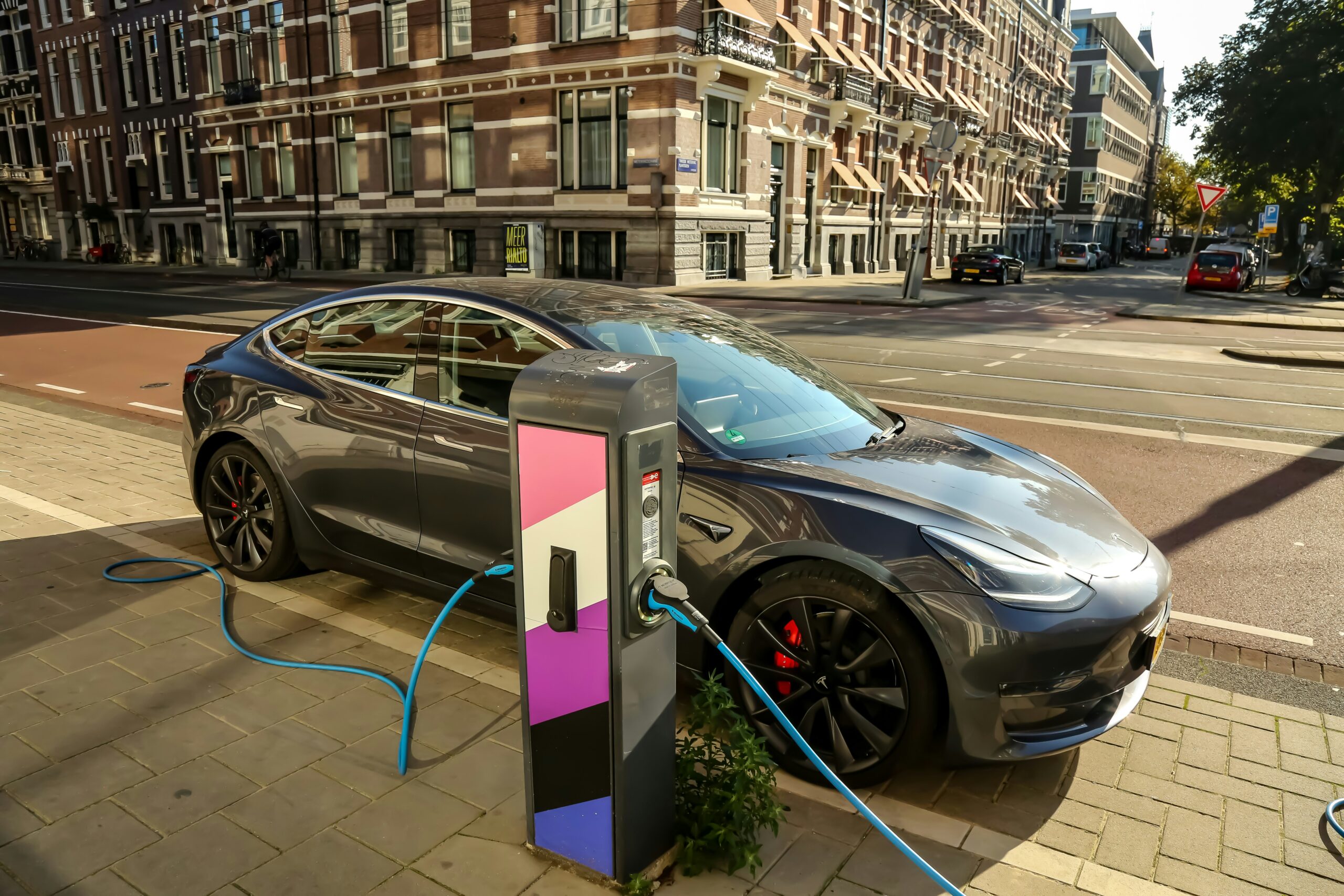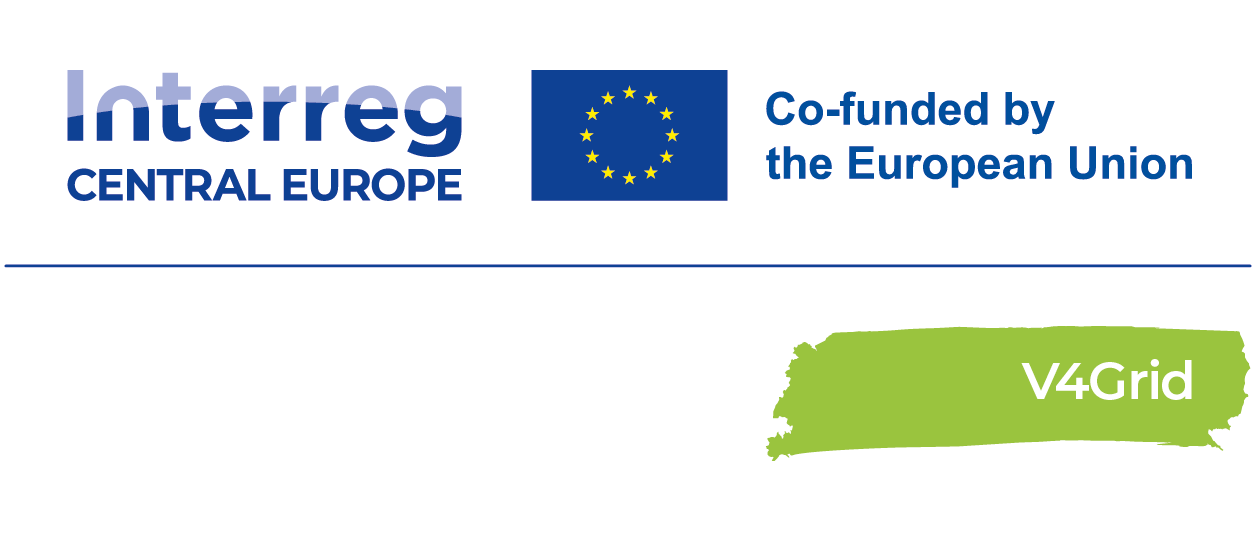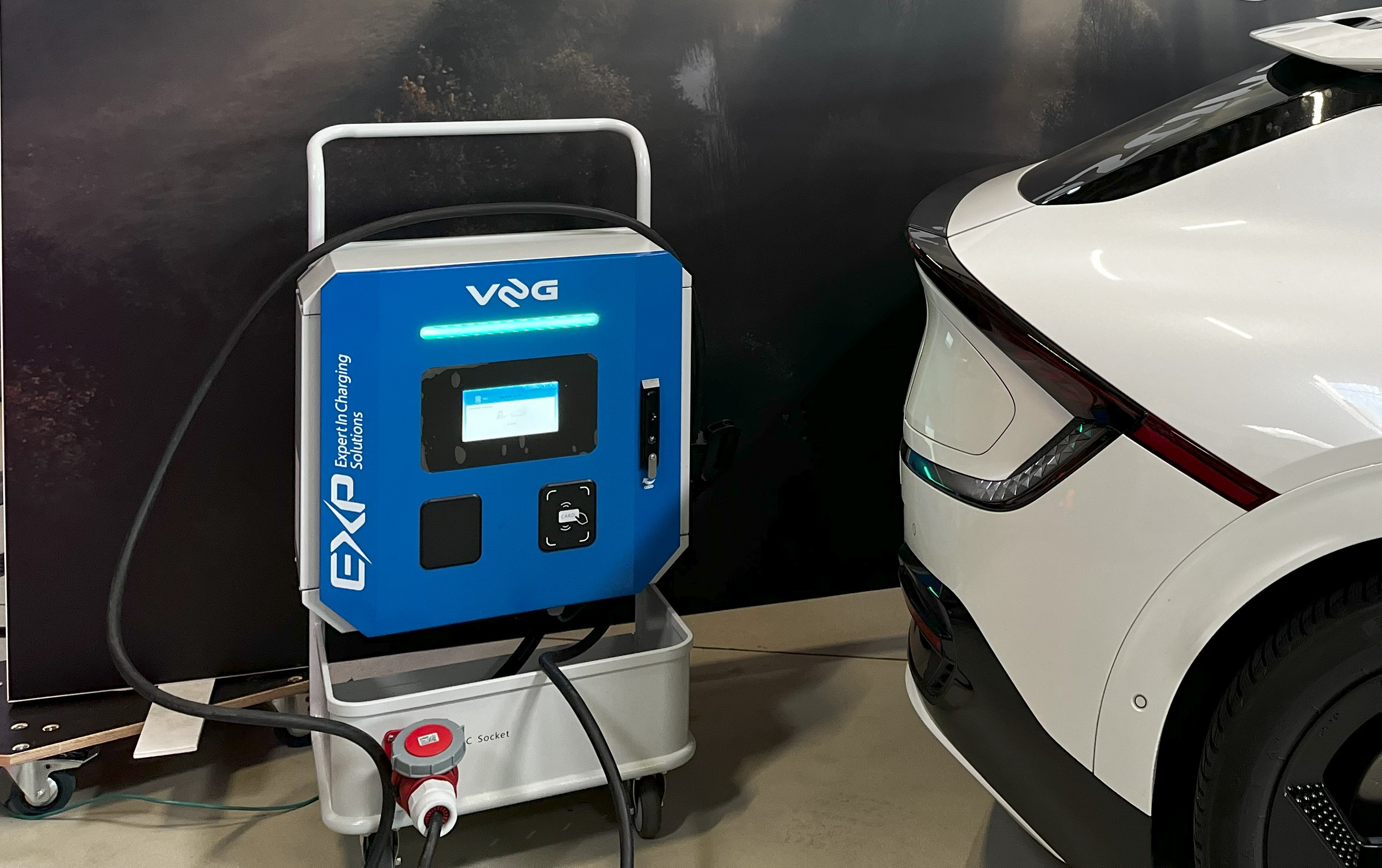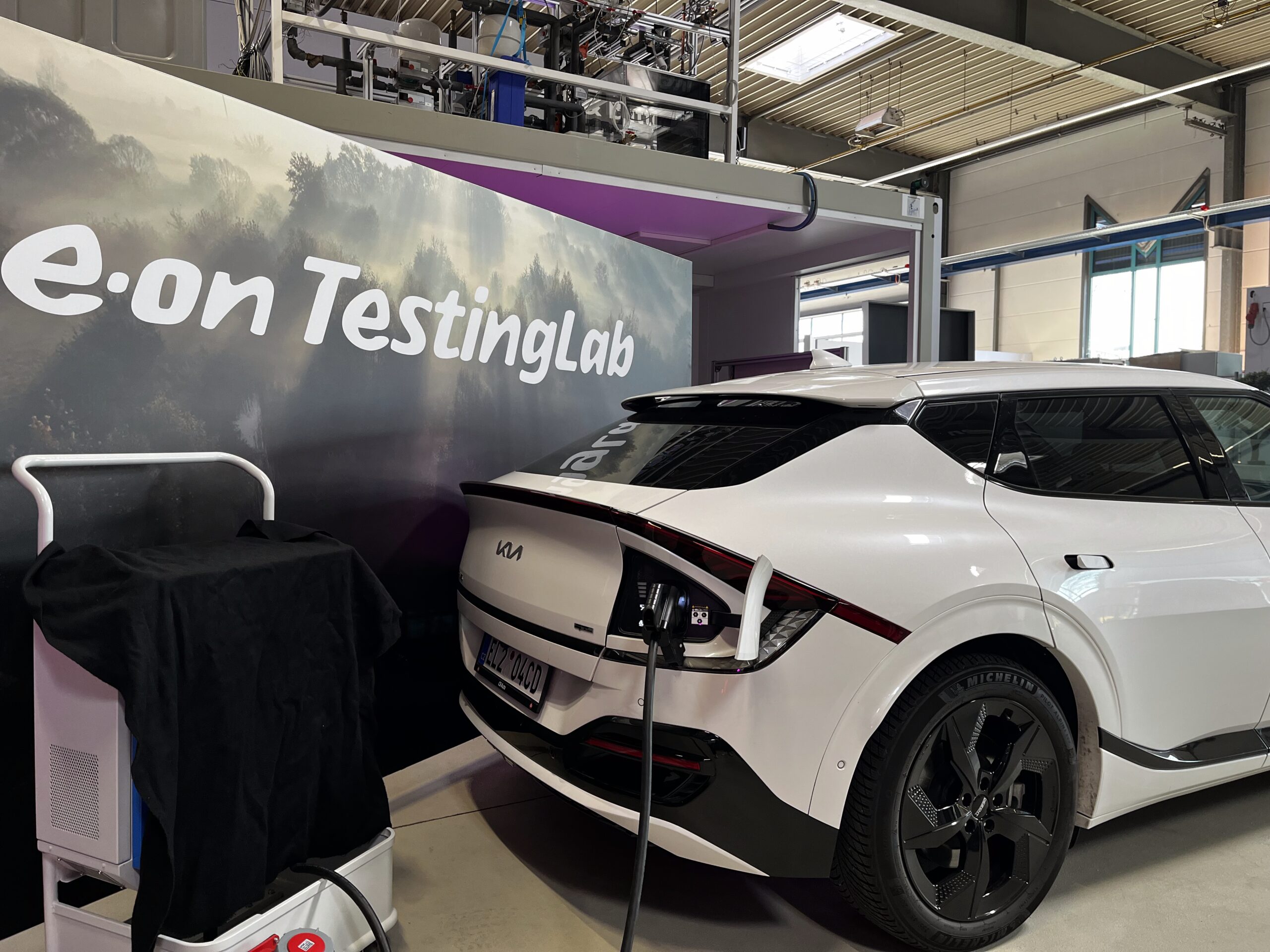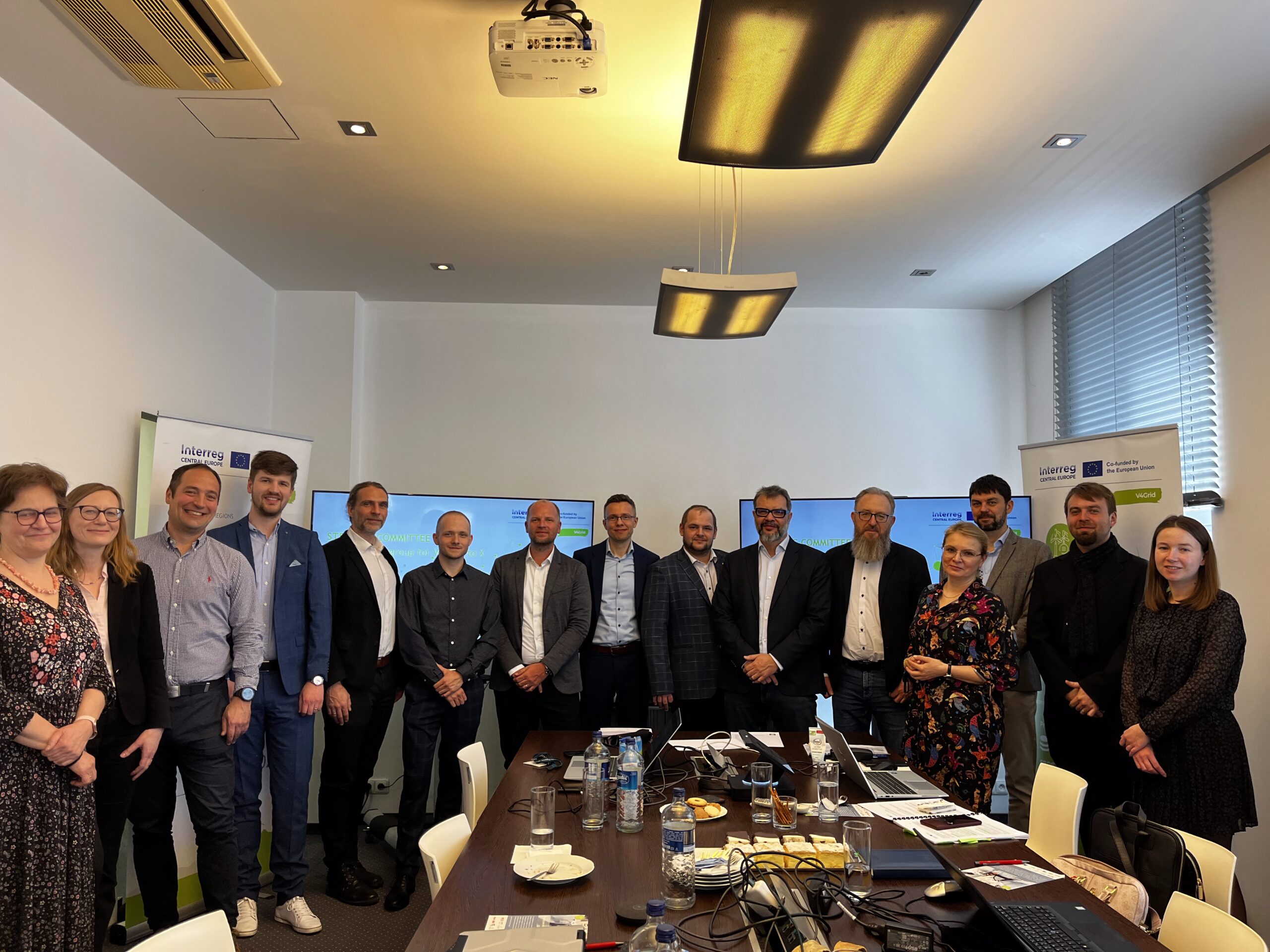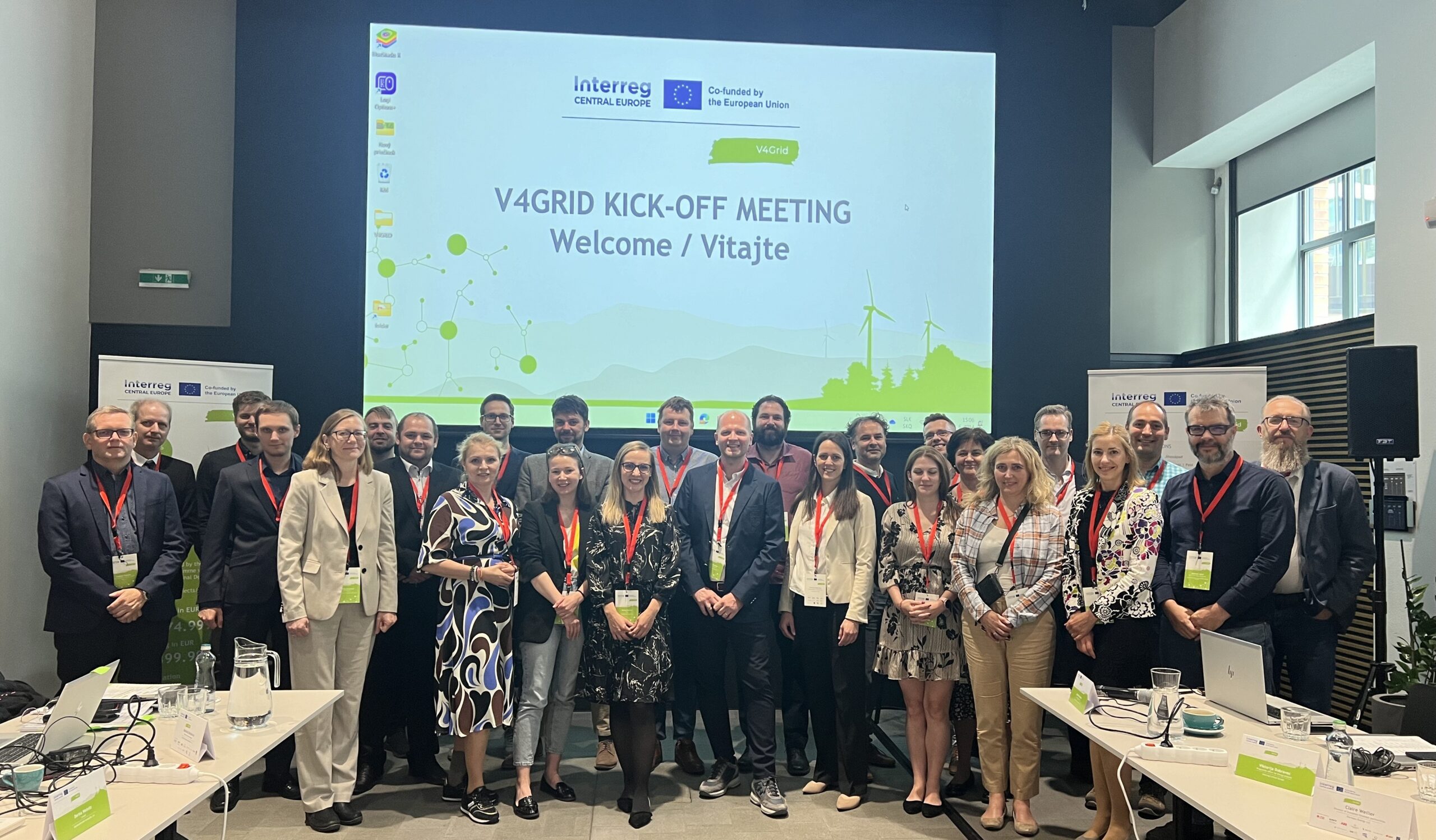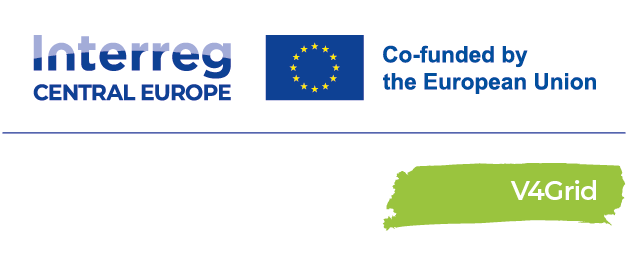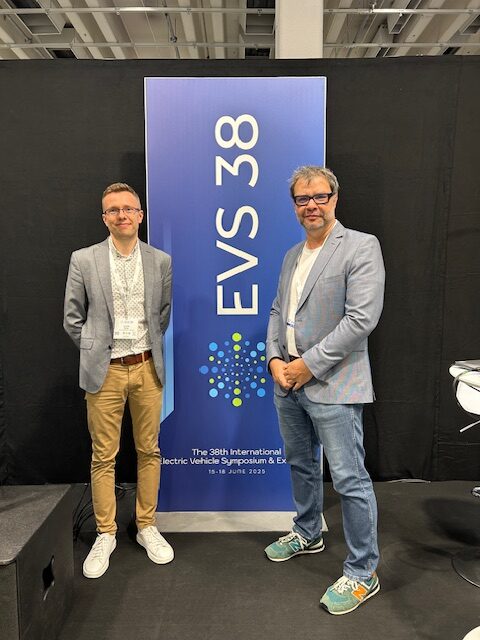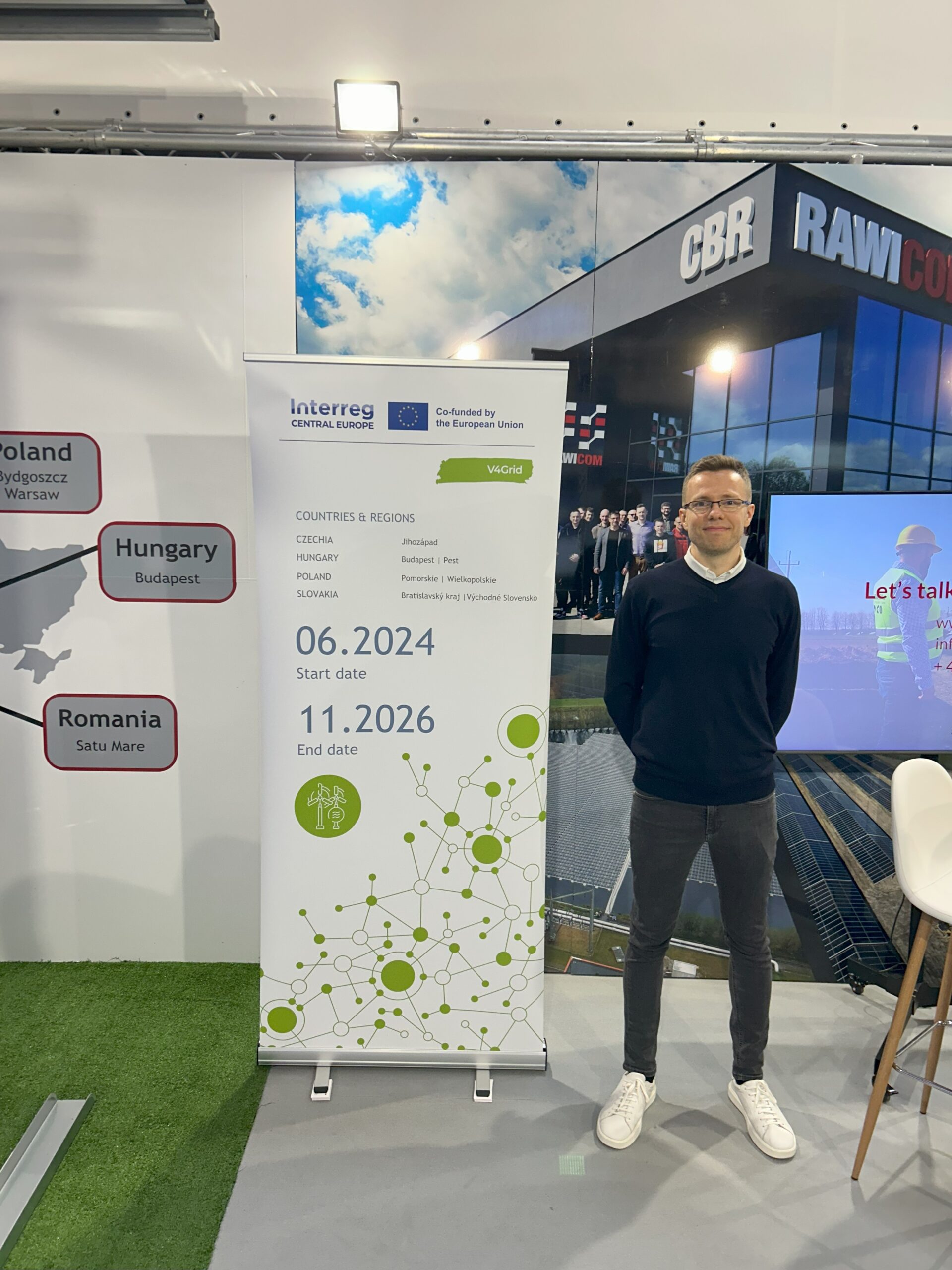Project overview
The Visegrad group for Vehicle to X
The transformation of our energy systems to renewable energies poses many challenges. One challenge is that renewable energy fluctuates largely over time and needs to be balanced to match demand. The Vehicle-to-Everything (V2X) technology offers a solution by allowing cars to draw energy from the grid to recharge their battery. Or send it back to the grid. The V4Grid project addresses regulatory challenges and a lack of understanding of this technology. The partners pilot V2X chargers in seven regions and develop policy recommendations to inform public authorities about V2X potentials.
-
2,37m €
-
Project Budget
-
80%
-
of the Budget is funded by ERDF
-
4
-
Countries
-
8
-
Regions
-
11
-
Partners
-
2
-
Pilots
Duration
Start date
End date
Project progress
About the project
The V4Grid project is exploring how electric vehicles can be transformed into flexible battery storage systems. Instead of serving only as a means of transport, EVs can store renewable energy and release it afterwards when demand is high. This not only helps balance and stabilize the grid but also makes energy use more efficient, affordable, and resilient.
To demonstrate the potential of this technology, we are testing real-world use cases across several regions. These pilots will show how EVs can provide backup power, optimize renewable integration, reduce energy costs, and support grid stability. Within the project, we will be focusing on these:
Vehicle-to-Home (V2H)
Using EVs to power households, lower energy bills, maximize the use of solar power when combined with PV, and provide reliable backup during outages.
Vehicle-to-Building (V2B)
Turning several cars or whole EV fleets into flexible energy resources. With this technology, the buildings can lower operational costs, smooth out energy demand, and boost resilience.
Vehicle-to-Grid (V2G)
Feeding electricity back into the grid to stabilize it and support the proper use of renewables.
Why is it worth it?
We think of electric vehicles as tools for transportation. But what if they could do much more and unlock their full potential? Every day, EVs spend up to 23 hours parked (according to Charge Point Operator data). If we could put that idle time to work, using their large batteries and smart technology, we could seamlessly integrate EVs into the entire energy ecosystem.
A Flexible Energy Storage Solution
Electric vehicles can act as batteries on wheels. Their ability to store large amounts of energy and provide it when needed gives them a distinct advantage over stationary storage solutions. This means EVs can seamlessly integrate into the energy grid, helping balance supply and demand more effectively, especially as our consumption cycle increasingly pressures grid stability.
EV as a Smart Investment
When you buy an electric vehicle, you're not just purchasing a car, but also investing in a dual-purpose energy asset. With the ability to send the energy back to the grid (V2G use case) your car acts as a flexible storage unit for energy. It offers the power depending on the current demand in the network which brings financial benefits and increasing return on investment over time.
Cost Savings for Households
Through Vehicle-to-Home (V2H), EV owners can draw power from their car's battery to run their homes. This means reduced reliance on the grid and lower electricity bills, increasing self-sufficiency and offering a reliable alternative to energy prices that fluctuate.
Stronger, Smarter Grids
Vehicle-to-Grid (V2G) technology empowers electric vehicles to feed energy back into the grid during demand spikes. This not only provides financial rewards to EV owners but also strengthens the stability of local energy networks, which face challenges from demand peaks and excess energy supply throughout the day. With bi-directional charging, we can transform EVs into active players in energy management and help smooth out these peaks.
We have to shift from simply using electric vehicles as transportation tools to perceiving them as components of a smarter, more sustainable energy system.
Project partnership
Project partners

Lead partner
Západoslovenská energetika, a.s.
E-mobility department
Project partner
Department of electric power engineering/Faculty of electrical engineering and Informatics
E-mobility department
KEZO Research Center Energy Conversion and Renewable Sources
60-501 Poznań
Roadmap
WHY
As we transition to a sustainable future, the demand for clean energy is rising. However, the challenge lies in managing fluctuations in energy supply, with its regular peaks and low periods. Our solution is to harness the significant capacity of electric vehicle batteries to store and distribute energy, improving grid stability and supporting a more efficient use of renewable energy. Our goal is to develop a system where V2X technology supports the efficient use of renewable energy sources and helps build a more reliable, sustainable energy infrastructure for the future.
WHO
The V4Grid project involves 11 partners from four Central European countries: Poland, Hungary, the Czech Republic, and Slovakia. Each partner brings unique expertise in areas such as energy management, data analysis, solar energy, and electric vehicle infrastructure.
WHAT
The project will deploy 18 V2X chargers across 15 pilot locations in various regions, tailored to the strengths and conditions of each partner. The aim is to test three key technologies: Vehicle to Grid (V2G), Vehicle to Building (V2B), and Vehicle to Home (V2H). These use-cases leverage EV batteries as flexible storage to ensure grid stabilization, enhance the efficient use of renewable energy, and reduce reliance on the grid.
PLAN
Our goal is to transform and improve the energy sector by integrating electric vehicles into the grid. As 11 partners from various sectors, we will: Collect and analyze data to understand how EVs can support grid stabilization and renewable energy integration. Define specific use cases based on the data of current situation and needs. Collaborate with hardware providers to identify the best bi-directional chargers for testing. Gather data from our testing to predict future impacts and scalability. Engage with local authorities to create supportive regulatory frameworks. Raise awareness about the benefits of V2X technology. These steps will help us build a cleaner, more sustainable energy system, with EVs and renewable energy at its core.
IMPACT
For EV owners and homeowners, V2X technology helps lower energy bills by using stored energy during peak periods and providing reliable backup power. It maximizes the use of solar energy by storing excess power in the EV, reducing reliance on the grid, and increases the overall value of the EV by turning it into an energy storage solution. For commercial buildings, V2X offers cost savings by charging during off-peak hours and using stored energy during peak periods, enhancing energy flexibility. It also ensures business continuity by providing backup power. On a larger scale, V2X supports grid stability by supplying energy during peak demand, increasing the use of renewable energy, and decentralizing the power system. This creates a more resilient, sustainable, and cost-effective energy network.
News
Events
Pilot actions
Outputs
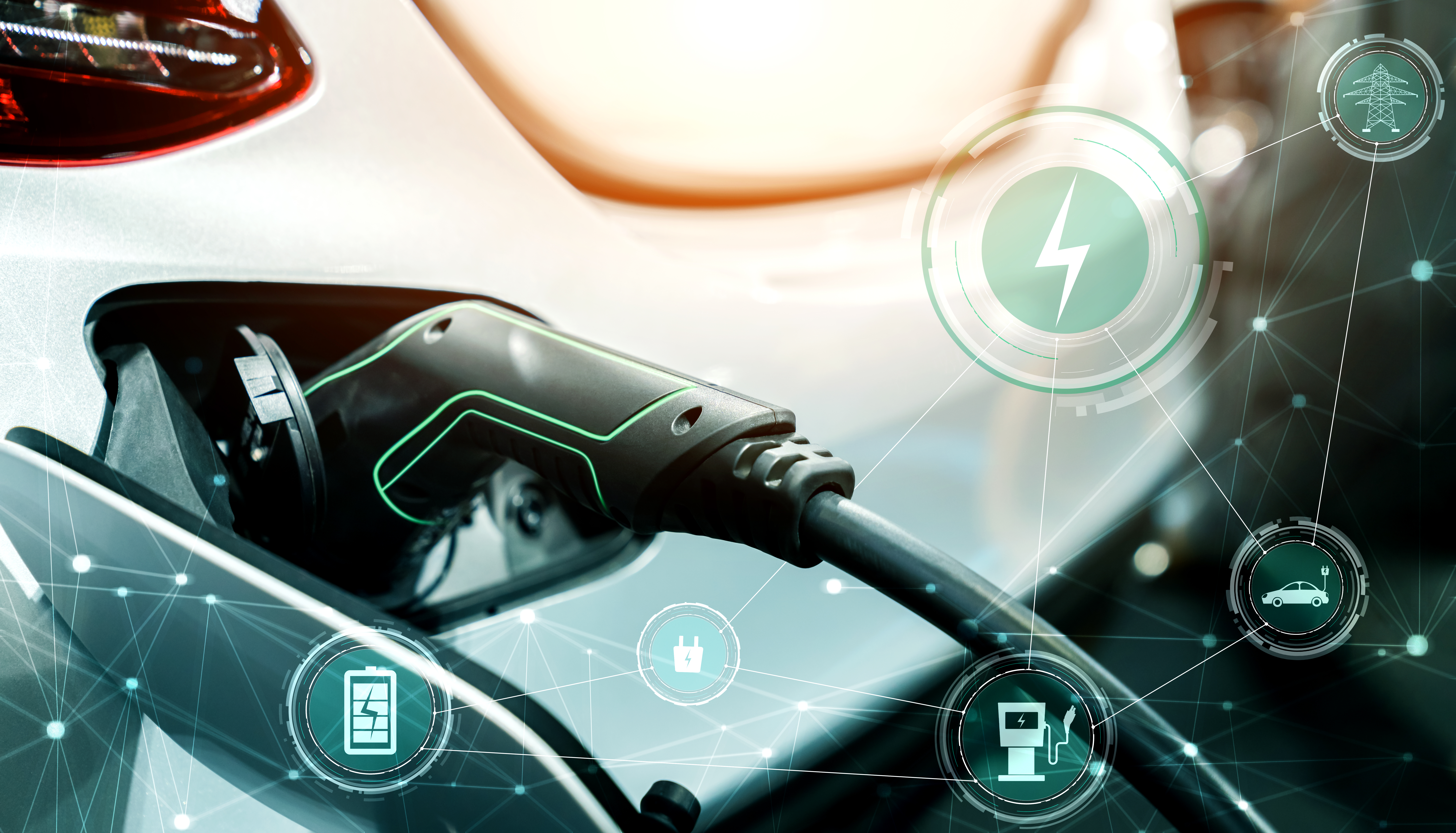
O 1.1: Transnational strategy for vehicle to everything technology
This part of the project outlines a strategic framework supported by real-world use cases: Vehicle-to-Home (V2H), Vehicle-to-Building (V2B), and Vehicle-to-Grid (V2G).
The aim is to develop a clear and actionable vision for the future deployment of V2X technology. By addressing essential elements, including technological feasibility and other technical aspects, this comprehensive strategy will support the transition of V2G from pilot projects to full-scale implementation.
Where are we now?
We have analyzed the current market situation and regulatory context, identified key barriers to implementation, and reviewed the most relevant standards. Most importantly, we have defined suitable use cases and collected data from representative locations to build reliable behavioral models. We have also selected the first hardware provider, and at some pilot sites preparations for testing are already underway.
Where are we going?
The next steps will focus on connecting the chargers under real pilot conditions and identifying the proper management system to operate them and collect the necessary data. By analyzing these outputs, we aim to clearly demonstrate the benefits of V2X and maximize its potential for widespread adoption. Ultimately, this will lead to the development of a comprehensive Transnational Strategy for Vehicle-to-Everything technology under Output 1.1.
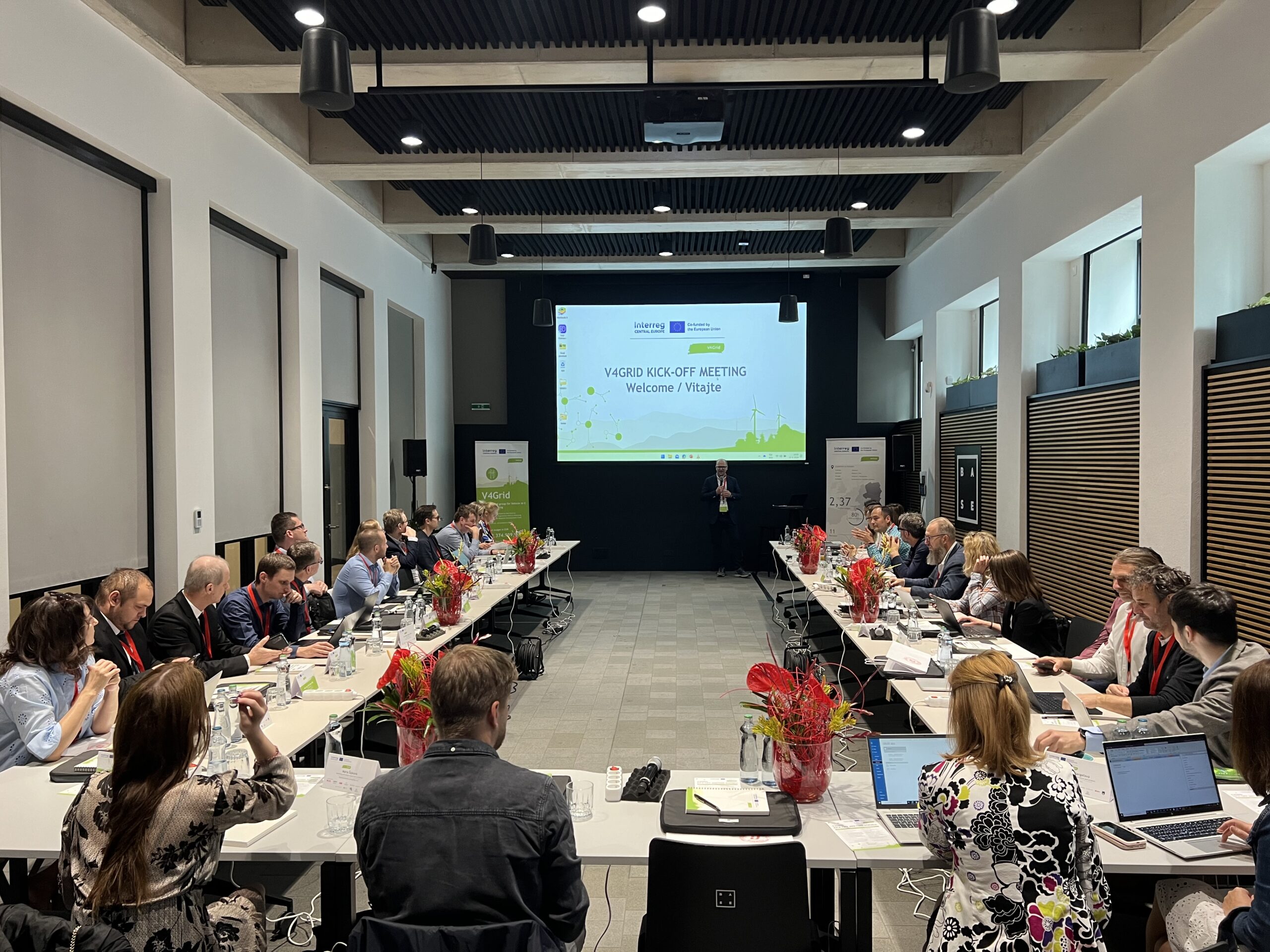
O 1.2: Enhanced project partners cooperation
Regular Online Meetings
Every Thursday, the V4Grid consortium meets online to discuss progress, share updates, and exchange news. These meetings also include invited experts, providing extra insights and knowledge that support the project’s goals and help all partners stay aligned.
In-Person Meetings
Our steering committee meetings, such as the one held in March and the next planned for autumn, are even more impactful. Being together allows for deeper dives into complex topics, more effective brainstorming, and stronger collaboration across the consortium.
Events and Networking
Participation in relevant V2G and e-mobility events gives us the opportunity to meet other experts, explore new ideas, and connect with stakeholders from software, hardware, energy, and mobility sectors. These events also help strengthen relationships across the V4Grid consortium.
Collaborative Work and Documentation
Cooperation among partners extends to the preparation of key project documents. For example, gathering and consolidating data from multiple partners lays a solid foundation for further analysis and ensures the project’s results are reliable and actionable.
Looking Ahead
This structured collaboration, formalized through partnership agreements, will continue beyond the project lifetime, enabling knowledge exchange, future proposals, and long-term cooperation across the European V2X ecosystem.
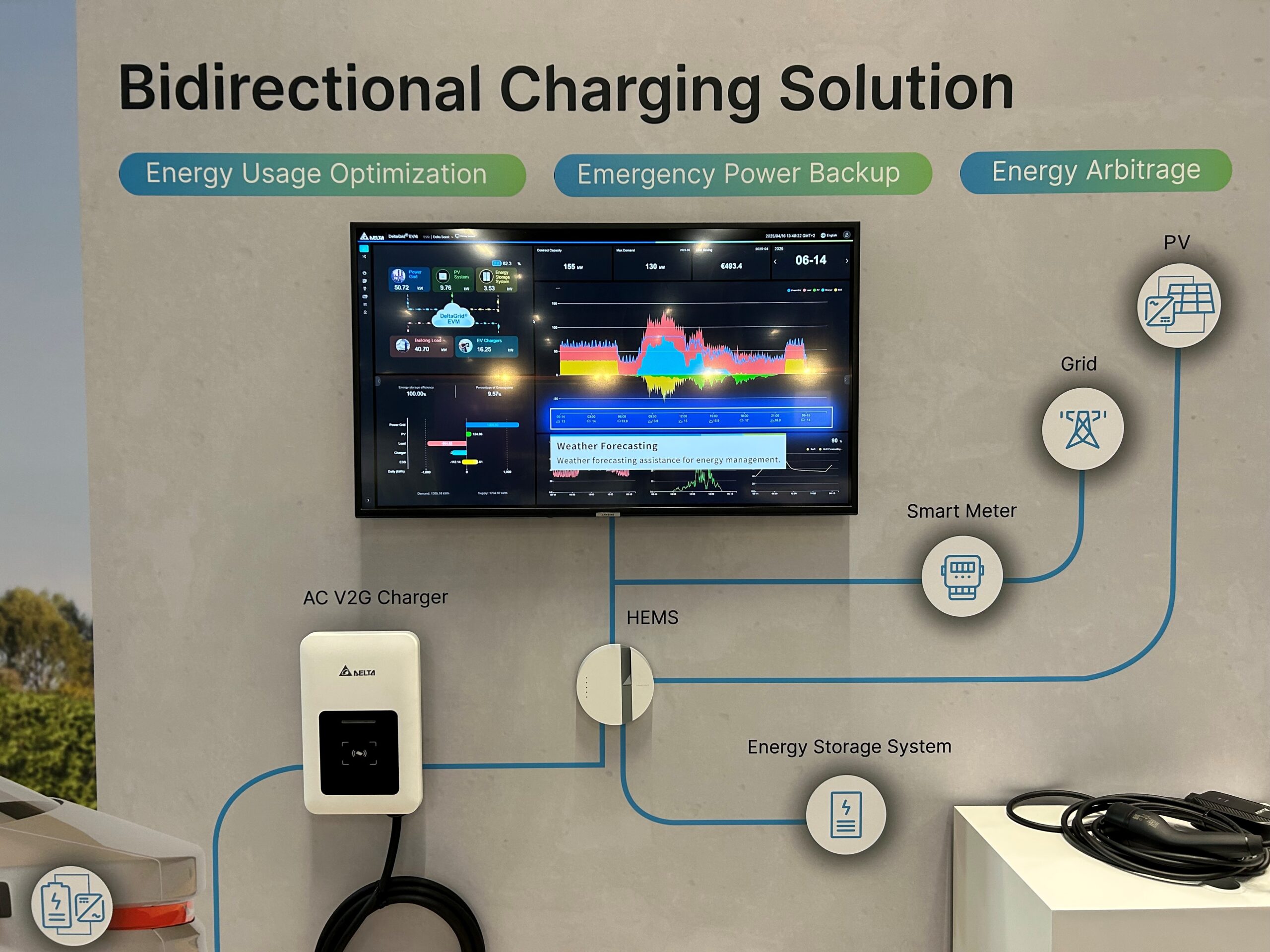
O 2.1: Management system for V2X service
The management system combines behavioral and predictive models with smart strategies to optimize energy flows, consumption, and EV battery storage. Its purpose is to increase the use of self-generated energy (such as rooftop solar), reduce demand on the grid, and lower overall energy costs. It is also expected to support the grid through peak shaving and reduce costs by taking advantage of market price fluctuations.
Where are we now?
We have gathered data from representative locations matching our use cases, helping us better predict user behavior and compare it with standard patterns. Thanks to our cooperation and involvement of KinIt and Met3r, alongside all V4Grid partners, we are still discussing the best strategies to manage the generated energy effectively.
Where are we going?
We are currently testing the chargers — not yet for full project testing, but to determine the optimal setup and focus areas. Once the chargers are installed, monitoring and data analysis will allow us to optimize the management model and maximize the benefits of V2X technology.
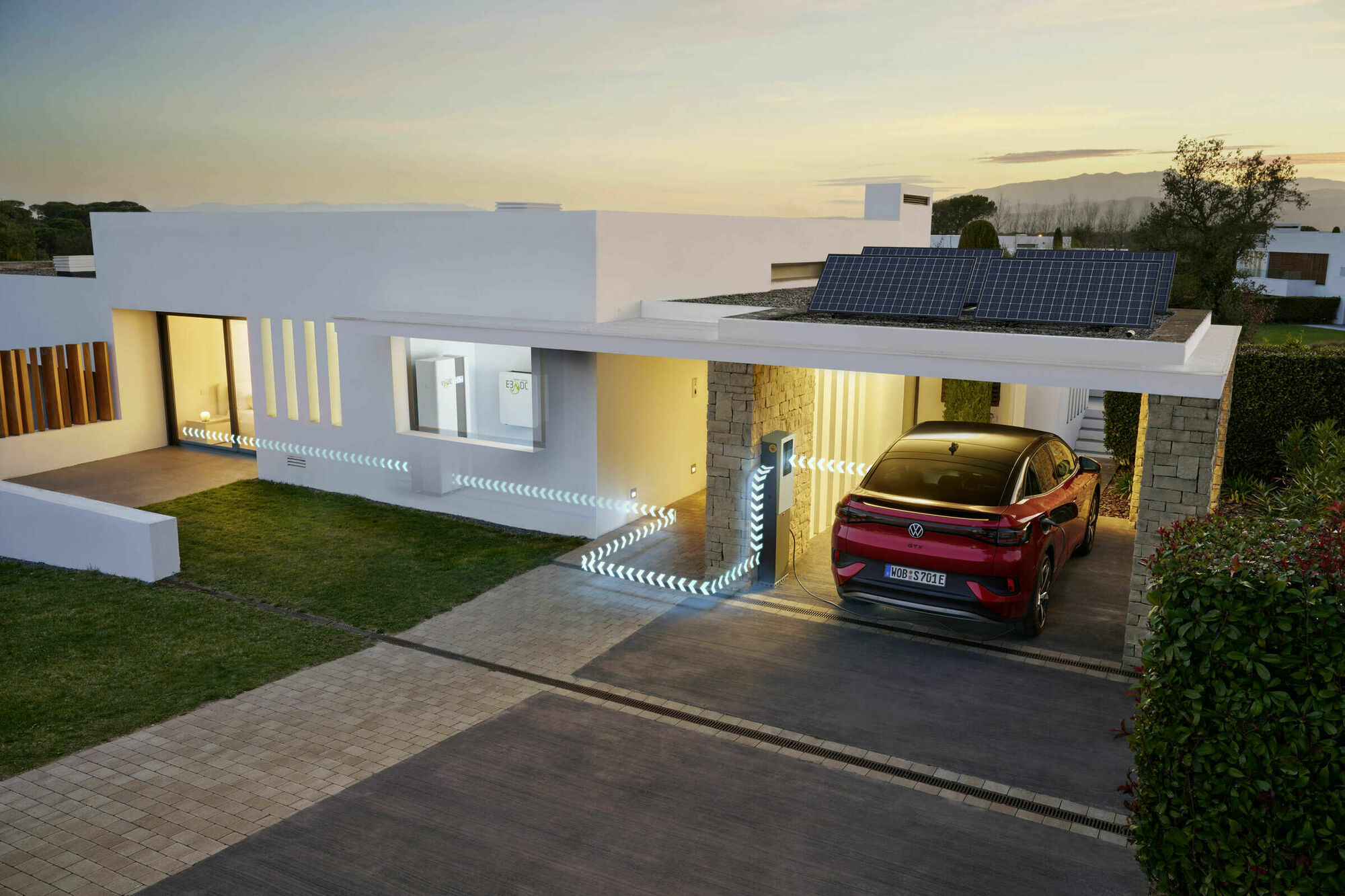
O 2.2: V2X pilot units in 4 countries
This output focuses on deploying 18 V2X-enabled charging units across 15 locations in the Central European region. The pilots include installation, maintenance, software setup, and data collection.
The V4Grid Project Covers Three Main Use Cases:
Vehicle-to-Home (V2H)
By discharging EVs to homes, it can provide backup power, lower costs for EV owners, reduce grid dependence, and maximize green energy use, especially when combined with rooftop PV systems.
Vehicle-to-Building (V2B)
Optimizes energy flow in buildings (such as offices) by reducing peak consumption, which leads to lower energy costs and more efficient energy use.
Vehicle-to-Grid (V2G)
EVs can help stabilize the grid, increase system flexibility, shave peaks during high-demand periods, and support the integration of green energy.
Pilot Sites
Pilot sites are located across the Visegrad countries: Czech Republic, Hungary, Slovakia, and Poland.
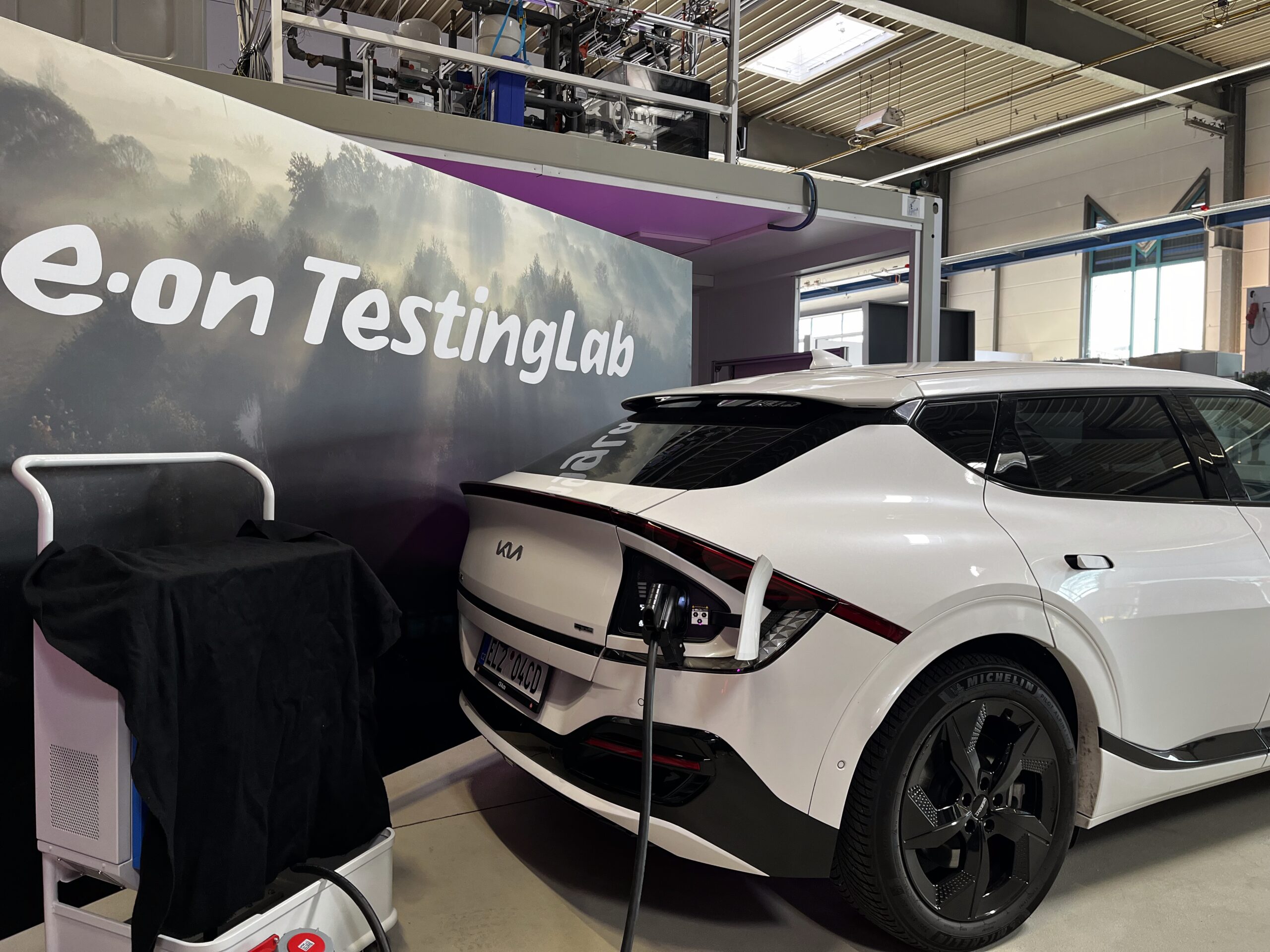
O 3.2: Business models for deployment of V2X in CE region
The business model aims to identify pricing strategies and return on investment based on real project figures, specific use cases, and the regulatory and market context of the Central European region. Thanks to the knowledge gained, connections with experts, experience from other projects, participation in events, consortium cooperation, and, most importantly, data collected from pilot sites, we will be able to assess the real impact of V2X technology. By considering factors like connection time, available battery capacity, local grid conditions, and our hands-on findings, we can prepare tailored business models.
Where are we now?
Through our activities so far, we have gained a better understanding of market potential and barriers. We have focused on local grid regulations and assessed whether the DC or AC approach is currently more realistic for our purposes.
Where are we going?
We will collect data from pilot sites and compare it with typical usage patterns to calculate ROI for each use case. Taking all key costs and outcomes into account, we will develop tailored pricing models for different user profiles and site conditions. Finally, these insights will be compiled into a comprehensive business case showcasing the full potential of V2X technology.
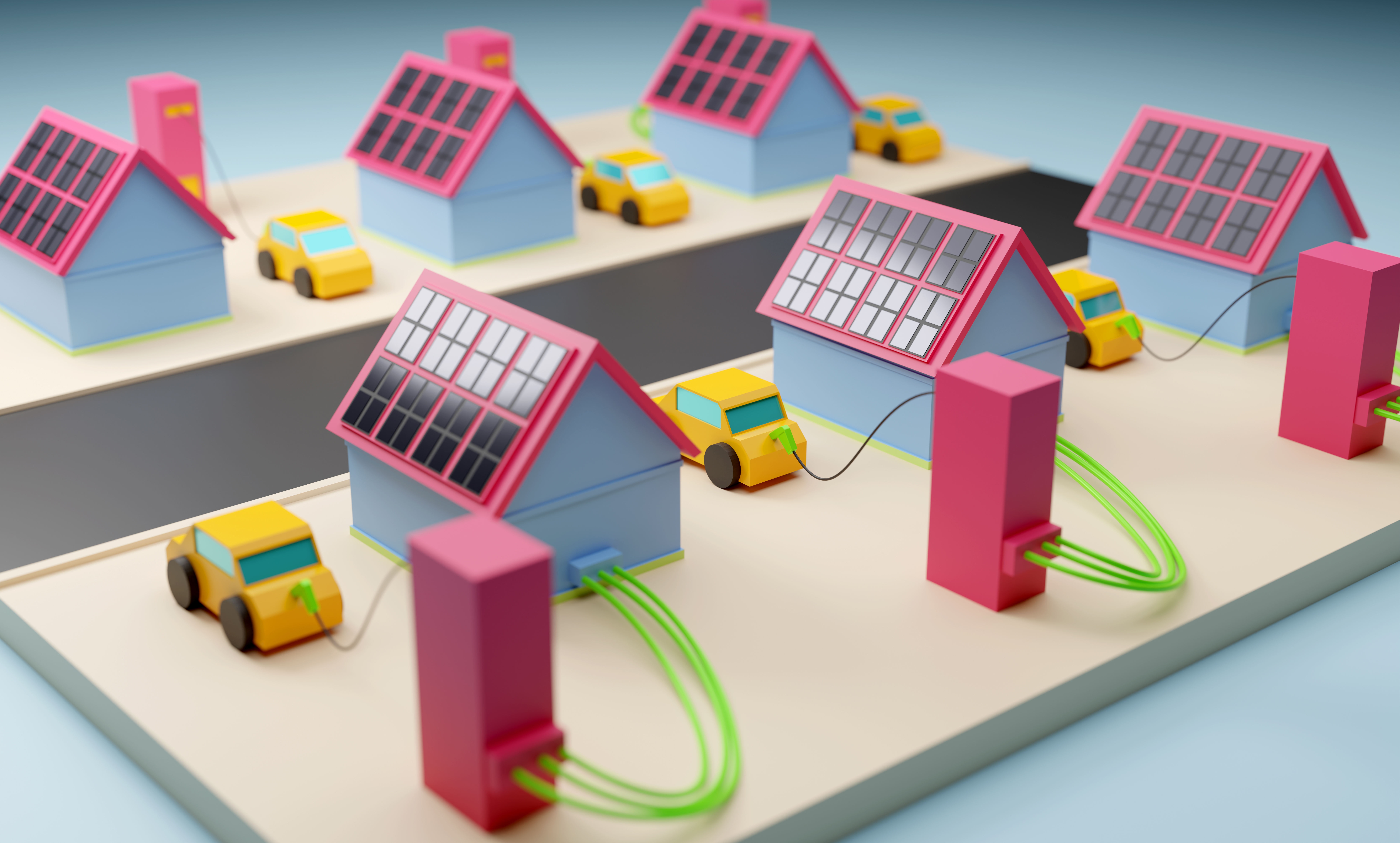
O 3.1: Pilot actions for evaluation of economic viability and business models
This output focuses on evaluating the economic viability and developing business models for V2X services across multiple use cases in the Central European region. The evaluation includes financial modeling, market analysis, and risk assessment to determine profitability and sustainability.
Assessing Financial Potential
Each of the three use cases offers distinct financial potential and benefits for different user profiles. By combining insights from market needs, identified barriers, and data gathered from pilot testing, we will assess the overall profitability of V2X solutions.
V4Grid
The project lead partner is responsible for the content of this project website.
